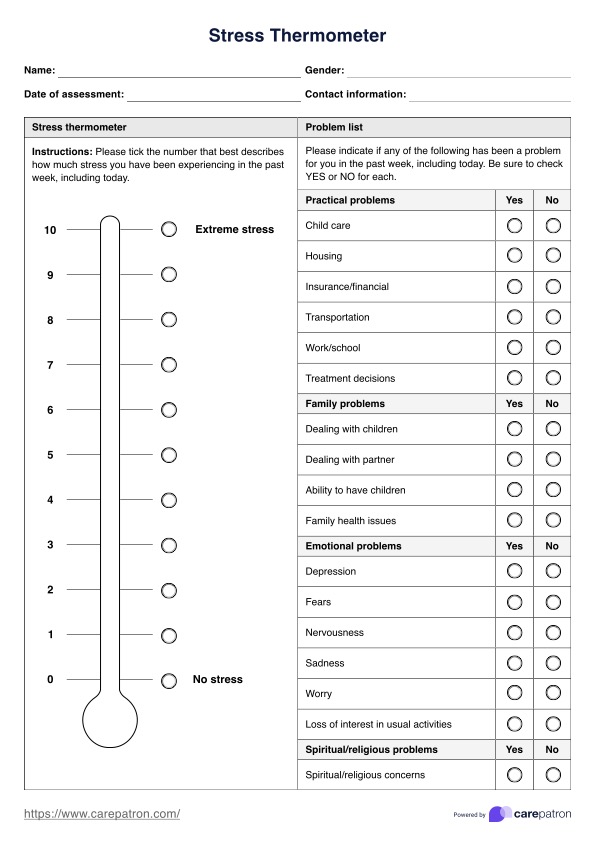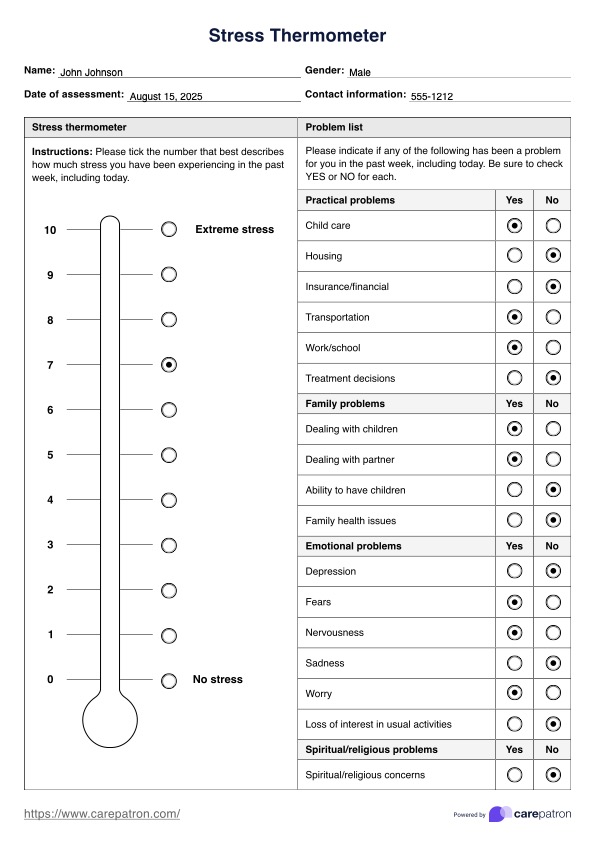Stress Thermometer
Access a free Stress Thermometer PDF that you can use to assess stress levels among clients.


When does stress become dangerous?
Stress is a normal part of life, but prolonged or intense stress can have serious health consequences. When the body experiences stress, it triggers the "fight or flight" response, a complex physiological reaction that prepares the body for perceived threats. This response involves several body changes, including blood flow alterations. During stress, blood constricted from tiny blood vessels under the skin is redirected in peripheral blood circulation, such as the hands, to more vital parts of the body, including internal organs and major muscles.
Chronic stress can lead to a range of physical and mental health issues, including cardiovascular problems, weakened immune function, and increased risk of anxiety and depression. The danger zone for stress varies among individuals, but some key signs indicate when stress has become potentially harmful:
- Persistent physical symptoms: Headaches, muscle tension as the skin constricts and hands feel cold, or digestive issues that don't resolve with rest.
- Sleep disturbances: Difficulty falling asleep or staying asleep.
- Mood changes: Increased irritability, anxiety, or depressive symptoms.
- Cognitive impairment: Difficulty concentrating or making decisions.
- Behavioral changes: Increased use of alcohol or drugs, social withdrawal, or changes in appetite.
Using tools like Stress Thermometers can help individuals monitor their stress levels and implement simple stress reduction exercises before reaching dangerous levels.
Stress Thermometer Template
Stress Thermometer Example
What is a Stress Thermometer?
A Stress Thermometer worksheet template is a visual tool designed to help patients identify and quantify their stress level and stress response. It typically features a vertical or horizontal scale, often resembling a thermometer, with numerical values and corresponding stress levels ranging from low to high. This stressful feelings thermometer is a simple yet effective way for patients to gauge and communicate their stress experiences.
How to use our Stress Thermometer template
Our Stress Thermometer PDF template is designed to be a user-friendly tool for practitioners and patients. Here's a guide on how to implement it effectively in clinical practice:
Step 1: Access and download the template
From the template preview on this page, click "Download" to get a fillable PDF copy of this template. You can also click "Use template" to open and edit it within the Carepatron platform before distributing it to patients.
Step 2: Introduce to the patient
Explain the Stress Thermometer concept to the patient, emphasizing its role in self-awareness and stress management. Collaborate with the patient to define what different stress levels mean to them personally, ensuring the tool resonates with their unique experiences.
Step 3: Instruction and regular monitoring
Demonstrate how to mark stress levels accurately on the thermometer scale, ensuring they understand how to use the tool effectively between sessions. Guide the patient in using the template consistently, whether daily or at agreed-upon intervals. Encourage them to note specific situations alongside their stress levels, providing context for their experiences.
Step 4: Review and analyze
During sessions, carefully examine the completed template with the patient. Look for patterns in stress levels, identify potential triggers, and discuss any notable fluctuations. This review process is crucial for gaining insights into the patient's stress experiences.
Step 5: Develop strategies and follow-up
Use the findings from the Stress Thermometer to create tailored stress management techniques that address the patient's specific needs. Work together to set realistic goals for stress reduction, focusing on manageable and sustainable changes. You can then compare.
How mental health professionals benefit from this assessment
Mental health professionals can significantly benefit from incorporating the Stress Thermometer assessment into their practice. This simple yet effective tool can measure a patient's stress levels and experiences, enhancing the overall quality of care and treatment outcomes. Its benefits include the following:
- Quantification and visualization: This helps patients externalize their feelings and gain a more objective perspective on their stress levels, facilitating more productive discussions.
- Progress tracking: The Stress Thermometer allows for regular monitoring of stress levels, enabling assessment of intervention and relaxation effectiveness and timely adjustments to treatment plans. This can also help compare stress levels after treatment to the past month or so.
- Pattern identification: Aids in recognizing triggers and stress patterns that may not be immediately apparent through conversation alone, informing more targeted interventions.
- Enhanced self-awareness: This assessment promotes patient self-awareness and self-management skills, potentially leading to more proactive stress management in daily life.
- Improved patient engagement: The tangible nature of the tool can increase patient involvement in the therapeutic process.
Commonly asked questions
A Stress Thermometer is a visual tool that helps individuals assess and communicate their stress levels on a scale, typically ranging from 0 (no stress) to 10 (extreme stress). It provides a simple and effective way to gauge one's stress level at a given moment.
To use a Stress Thermometer, simply identify the number on the scale that best represents your current stress level. For example, if you feel moderately stressed, you might indicate a 6 or 7 on the thermometer. This visual representation can help you recognize when your stress increases and remind you to implement stress management techniques.
Taking your "stress temperature" involves regularly checking in with yourself to assess your current stress level. This can be done at various times throughout the day, such as in the morning, afternoon, and evening. By monitoring your stress levels, you can identify patterns, triggers, and times when your stress is particularly high or low.





















-template.jpg)

















































































